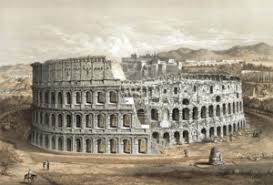Writing Historical Nonfiction and the Challenges That Come With It
 If you’ve been following our blog for some time now, you’ll know we’ve discussed writing historical fiction in the past. Today, however, we’re talking about historical nonfiction. Just to clarify, nonfiction means writing that is based on actual events. It’s factual. Nonfiction writing includes biographies (stories written about someone’s life by a different author), autobiographies (linear stories written about a person’s life by that same person), and memoir (non-linear story about a person’s life by that same person).
If you’ve been following our blog for some time now, you’ll know we’ve discussed writing historical fiction in the past. Today, however, we’re talking about historical nonfiction. Just to clarify, nonfiction means writing that is based on actual events. It’s factual. Nonfiction writing includes biographies (stories written about someone’s life by a different author), autobiographies (linear stories written about a person’s life by that same person), and memoir (non-linear story about a person’s life by that same person).
In some ways, even though the events have already happened and the characters have already existed, writing nonfiction can be harder than fiction. This is especially true for historical nonfiction. You see, when writing historical fiction (so, a story the author makes up set in a specific time), the author must research the area and the year and the customs, but what he/she does with the characters and the story is ultimately up to them. History may serve as a guide, but the story is 100% their decision.
Historical nonfiction, on the other hand, can prove slightly more challenging. There has to be both acute attention to detail and incredible creativity. Making your own story interesting is one thing; making another’s story interesting is an entirely different beast.
Writing historical nonfiction step 1: research, research, research.
To be a credible historical nonfiction author, you absolutely must do your homework. If you details wrong, you’ll undo every good thing your book accomplishes. Nonfiction books are rooted in truth. There is leeway when writing memoir: that truth is yours. When writing historical nonfiction, there is less room. Sure, you can write about speculations. Must they must be clearly labeled as speculation.
Hit the books (or the Internet) and uncover every single truth from that time. Talk to experts. Become an expert yourself. Only then are you ready to write historical nonfiction.
Step 2: Fact check.
Like any good nonfiction writer or journalist, you need to check your facts. Use multiple sources and make sure they’re credible. If you hear from one person that George Washington’s favorite food was apples, you need to confirm it with another before you present it as fact. If you can’t confirm it with another source, then you must present it clearly to your reader. According to one source, Washington’s favorite food was apples. Clarity is key when writing nonfiction of any kind.
A lot of times, those who traditionally publish nonfiction of this kind will have someone in-house to fact check their work as well. Self-publishers don’t have this kind of luxury unless they hire a freelancer. Being so, there’s even more pressure on the self-publisher to check and recheck their work. Don’t even know where to start? Research. (Doesn’t everything seem to come back to research?)
Step 3: Write. Write fiercely.
Not every decision when writing historical nonfiction will be up to you. In fact, so few will be. When writing fiction, you get to decide what happens to your characters – how they grow, how they change, whether they live or die – but when writing historical nonfiction, all of these freedoms have been taken from you. You are simply recounting a story. But in this retelling, you must somehow make it your own. What makes your book so special?
This kind of writing can feel stifling at moments, but you must remain dedicated to your craft. But you are the author of this piece of historical nonfiction, meaning that decisions are still yours to make. Maybe not all of them, but enough.
Historical nonfiction bestsellers:
- The Diary of a Young Girl, by Anne Frank
- Unbroken: A World War II Story of Survival, Resilience, and Redemption, by Laura Hillenbrand
- Night, by Elie Wiesel
- 1776, by David McCullough
- The Immortal Life of Henrietta Lacks, by Rebecca Skloot
